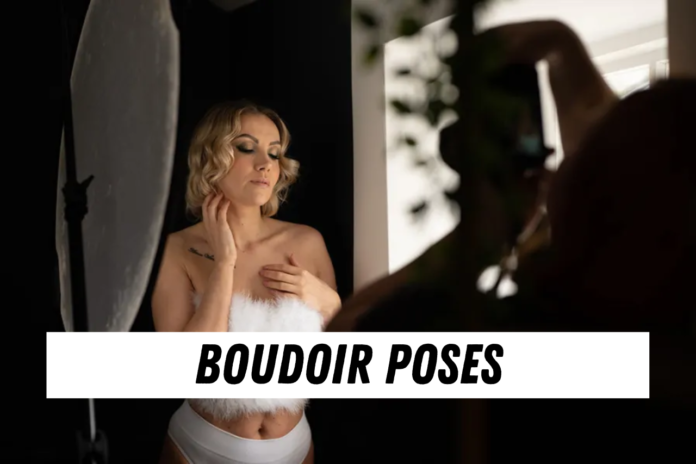Boudoir photography is a celebration of intimacy, sensuality, and self-expression, capturing the beauty and allure of the human form in intimate settings. Central to the art of boudoir photography are boudoir poses – subtle yet powerful expressions of femininity and confidence that evoke emotion and desire. In this comprehensive guide, we’ll delve into the world of boudoir poses, exploring techniques, tips, and inspiration to help you master the art of boudoir photography.
Understanding Boudoir Poses
1. The Essence of Boudoir Poses
Boudoir poses are more than just physical postures; they are expressions of confidence, sensuality, and empowerment. Each pose tells a story, conveying emotion and allure through subtle movements and gestures.
2. Creating Connection
Effective boudoir poses establish a connection between the subject and the viewer, drawing them into the intimate world of the photograph. Through eye contact, body language, and expression, boudoir poses invite the viewer to share in the subject’s experience.
3. Embracing Diversity
Boudoir poses celebrate the diversity of beauty, embracing bodies of all shapes, sizes, and ages. Whether curvy or slender, young or mature, every individual has the potential to exude confidence and sensuality through carefully crafted poses.
Mastering Boudoir Poses
4. Flattering Angles
Experiment with different angles to find the most flattering poses for your subject’s body type and features. By shooting from above, below, or at eye level, you can highlight curves, elongate the body, and accentuate natural beauty.
5. Posing Techniques
Learn classic posing techniques such as the S-curve, the three-quarter turn, and the hand-on-hip pose to create elegant and flattering boudoir compositions. These techniques enhance body lines, create visual interest, and convey confidence and allure.
6. Expression and Emotion
Encourage your subject to express genuine emotion and confidence during the shoot, capturing moments of laughter, joy, and sensuality. Authenticity is key to creating compelling boudoir images that resonate with viewers on an emotional level.
Inspiration and Ideas
7. Mood Boards and Inspiration
Curate mood boards and gather inspiration from fashion magazines, art galleries, and online resources to spark creativity and explore new posing ideas. Draw inspiration from a variety of sources to develop your unique style and vision as a boudoir photographer.
8. Collaborating with Clients
Collaborate closely with your clients to understand their vision, preferences, and comfort levels. By building trust and rapport, you can create a safe and supportive environment where clients feel empowered to explore their sensuality and express themselves freely.
9. Exploring Props and Accessories
Incorporate props and accessories such as fabrics, jewelry, flowers, or furniture to add visual interest and depth to your boudoir compositions. Experiment with different textures, colors, and styles to enhance the mood and storytelling elements of your images.
FAQs (Frequently Asked Questions)
What is the difference between boudoir photography and traditional portrait photography?
- Boudoir photography focuses on capturing intimate, sensual images that celebrate beauty and confidence, often in private settings such as bedrooms or studios. Traditional portrait photography, on the other hand, typically involves formal poses and settings and may not emphasize sensuality or intimacy.
How can I make my clients feel more comfortable during a boudoir photoshoot?
- Establishing a comfortable and supportive environment is essential for boudoir photography. Communicate openly with your clients, address any concerns or insecurities they may have, and encourage them to express themselves authentically.
Are there explicit represents that turn out best for various body types?
- While there are no one-size-fits-all poses for boudoir photography, certain techniques can flatter different body types. Experiment with posing angles, lighting, and composition to highlight your subject’s unique features and create stunning images that celebrate their beauty.
What should I wear to a boudoir photoshoot?
- Wear comfortable, form-fitting clothing that allows for ease of movement and flexibility during the shoot. Avoid clothing with busy patterns or logos that may distract from the main focus of the images.
How can I improve my posing skills as a boudoir photographer?
- Practice regularly, study posing techniques from experienced photographers, and seek feedback from clients and peers. Attend workshops, seminars, and online courses to expand your knowledge and refine your skills as a boudoir photographer.
What are some creative posing ideas for boudoir photography?
- Get creative with posing by incorporating props, experimenting with different angles and perspectives, and encouraging natural, spontaneous movements and expressions from your subjects.
Conclusion
Mastering the art of boudoir poses is an ongoing journey of exploration, creativity, and self-discovery. By understanding the essence of boudoir photography, mastering posing techniques, and drawing inspiration from diverse sources, you can create compelling images that celebrate beauty, confidence, and sensuality. Remember, boudoir photography is not just about capturing images – it’s about empowering individuals to embrace their unique beauty and express themselves authentically.
Also Read: bad photoshop

